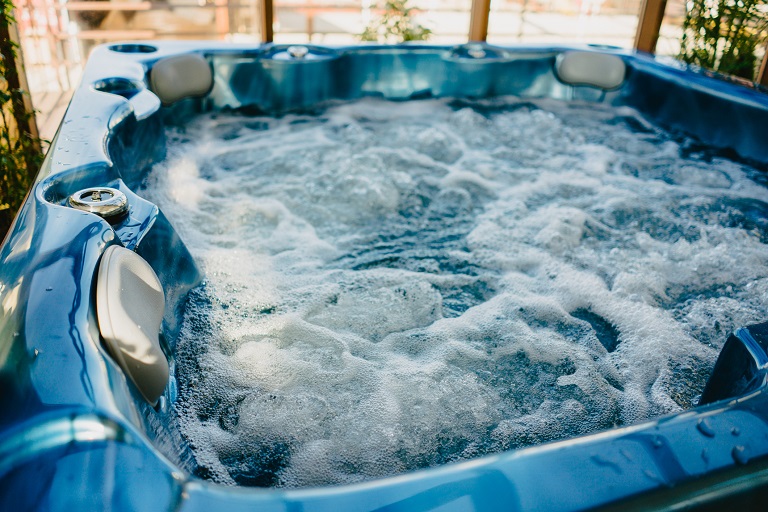
Wondering how much it costs to run a hot tub? Discover average monthly and yearly costs, key factors, and tips to keep your hot tub expenses in check.
Unwinding in a jetted tub or hot tub will erase the day’s worries


Jetted bathtubs are installed in large bathrooms.
Hot tubs are usually installed outdoors.
Jetted bathtubs accommodate one person.
Hot tubs accommodate up to eight people.
Jetted bathtubs use fresh water with each use.
Hot tubs use the same water for up to six months.
Having a place to relax at the end of a long day is the perfect way to unwind. Many homeowners wonder if a jetted bathtub or hot tub makes more sense—and the answer is that it depends on your budget, intended use, and desire for ongoing maintenance.
Jetted bathtubs versus hot tubs are a common debate. Their most significant differences include location, number of people who can use them, water supply, and maintenance. If you are looking for something you can utilize for entertainment and do not mind regular upkeep, consider a hot tub; otherwise, a jetted bathtub may provide the level of relaxation you desire.

A jetted bathtub replaces the standard tub in bathrooms large enough to accommodate them. Unlike hot tubs, they are not portable but a permanent part of your bathroom. They are often meant for a single person, but some models may fit up to two people. The primary purpose of jetted bathtubs is for cleaning and grooming, but you may also use them for relaxation.
| Pros | Cons |
|---|---|
| Easy to maintain | No heat controls to keep a steady temperature |
| Allows privacy and relaxation | Requires professional installation |
| Creates a spa-like experience at home | May be smaller than is comfortable for some people |
| May increase your home’s value | Some bubbles and bath salts can damage the jets. |
Best for:
People who enjoy privacy while relaxing
Homeowners who do not want to add weekly maintenance to their routine
Homeowners who are renovating a bathroom or building a new home
Jetted bathtubs are easy to maintain because they do not have sitting water that requires chemicals and cleaning to keep them safe. They also provide complete privacy and a spa-like experience in the comfort of your own home. You can come home and slip into the bubbling jets after a long day without talking to anyone.
Jetted bathtubs often add to a home’s value, recouping 50% to 60% of the renovation cost when you sell the house, thanks to its luxurious benefits.
The most considerable downside of jetted bathtubs is the lack of heat control. You are at the mercy of your hot water heater, but even the hottest water cools down after a short while. Some luxurious models have built-in heaters, which increase your installation and utility costs because they require electricity.
Because of their sheer size and the complexity of installing the plumbing and potential electricity, jetted bathtubs require professional installation, sometimes by a pool electrician. There are also some products you cannot use, including certain types of soap, essential oil, and bath salts, that might damage the jets (check the owner’s manual for details). For larger people, the bathtub may not be the most comfortable.
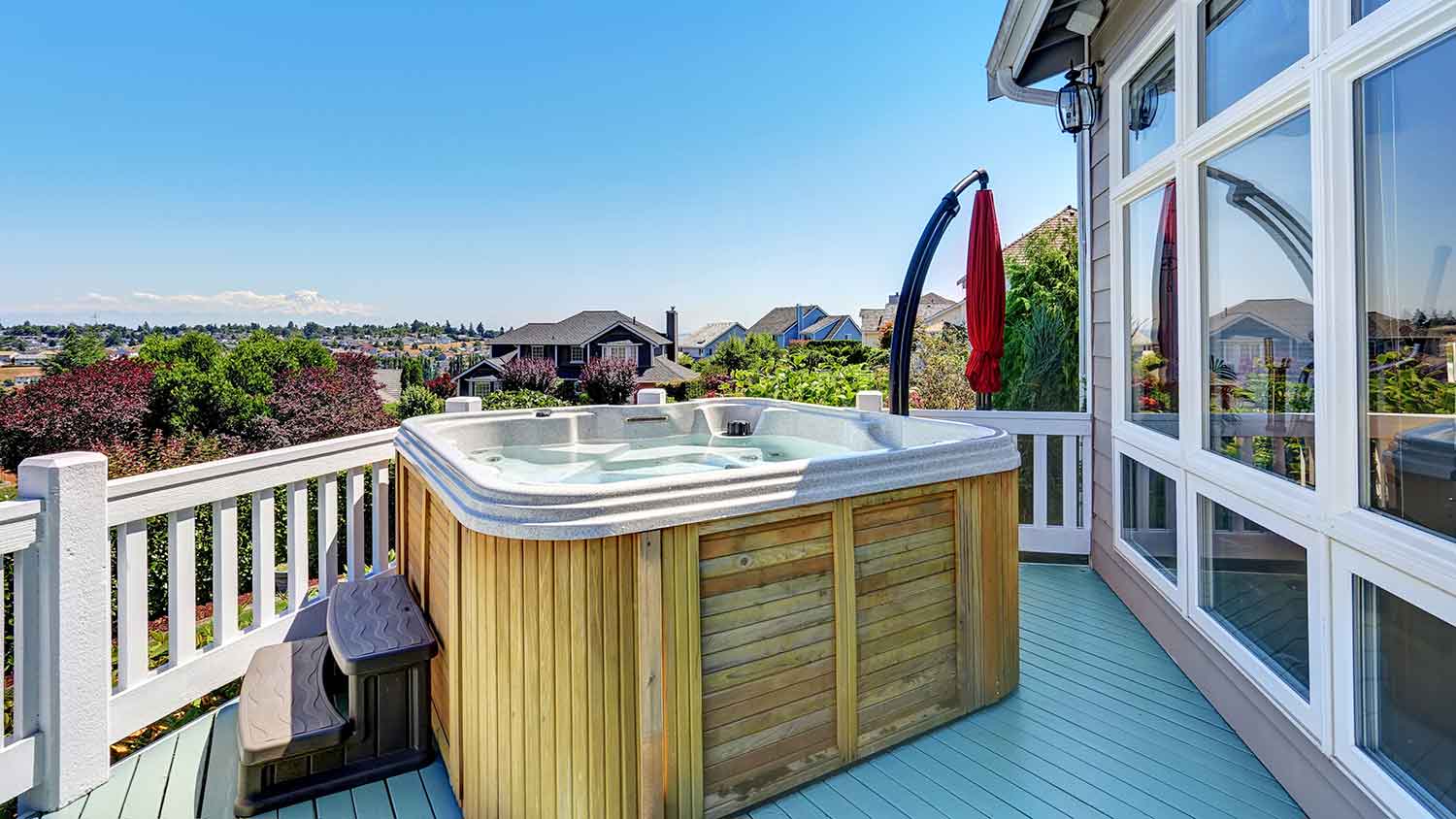
A hot tub is like a small pool of heated water. It is freestanding and sometimes portable, and is often installed outdoors. There are many hot tub benefits.
Everything to run the tub is built inside its cabinet, so it does not require any plumbing. You can fill or drain a hot tub as needed, but you can also leave it filled for three to six months if properly treated with chemicals.
Hot tubs hold a set temperature. They come with or without jets and can often seat two to eight people.
| Pros | Cons |
|---|---|
| Steady temperature for year-round use | Requires extensive maintenance |
| Great opportunity for relaxing alone or with friends | You must plan for the heavy weight of the hot tub, water, and users. |
| Provides room for a large number of jets and features | Installation can be tricky. |
| Portable | High cost to purchase and maintain |
| Remains filled for three to six months |
Hot tubs are self-contained tubs that provide opportunities for entertaining if you have a large enough tub, but are also good for individual relaxation. The water remains in the tub for up to six months with proper care, and requires only a garden hose to fill it.
Hot tubs use a thermostat to heat the water, and users can regulate it however they see fit. With today’s technology, you can often set the preferred temperature ahead of time so the tub is ready for use when you enter it.
Many hot tubs have numerous jets for ultimate relaxation, along with other features, including built-in speakers or even mini waterfalls. Hot tubs are typically also portable. If you move, you simply drain the tub and move it to your new location.
The normal price range for hot tubs is $2,000 to $11,000. The average hot tub costs $6,000, but you can get luxurious hot tubs with deluxe massaging jets for as much as $35,000. It is not a small investment, and that is before required maintenance. Expect hot tub maintenance to cost $500 to $1,000 per year and take a few hours a week.
You must have a firm foundation to hold the weight of the hot tub, water, and the people using it. A hot tub installer near you can help determine if your structure is adequate. Decks typically must be reinforced, but not all can handle a hot tub's weight.
Whether you are installing a hot tub indoors or outdoors, getting them to the area can be tricky. It may involve removing fencing or using heavy machinery to get them to the proper location. If installing indoors in a hard-to-access area, it may require removing doors or special flooring to withstand the weight. When installing outdoors, if you must install support beams on your deck, it will increase the complexity and cost.
| Size | Fits one to two people | Fits up to eight people |
| Location | Indoors | Outdoors (can be indoors) |
| Use | Cleaning and relaxation | Relaxation and entertaining |
| Care | Minimal care | Requires ongoing maintenance |
| Installation | Professional | Professional and DIY |
Depending on the model purchased, hot tubs can seat up to eight people. They often have built-in seats and plenty of room for relaxation and entertainment. Jetted tubs, however, are for single users and sometimes two people.
Most accommodating: Hot tubs
Hot tubs are installed outdoors in most cases. You will need adequate room for the hot tub and to store the cover, especially if you use a hot tub cover lifter. It is essential to ensure the surface on which you install the hot tub can withstand its weight. Jetted tubs are located in a bathroom and provide much more privacy.
Most private: Jetted tubs
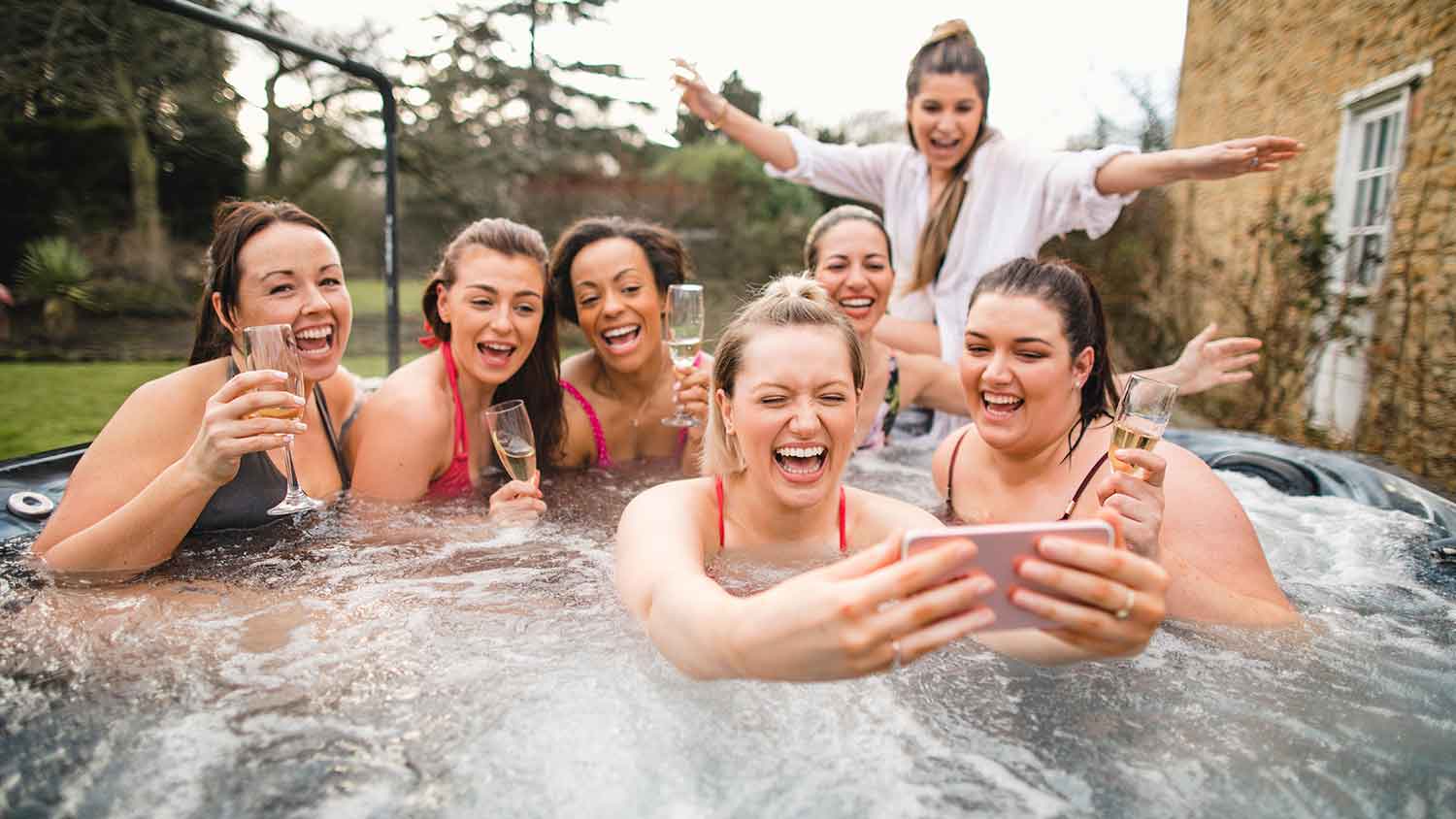
Jetted tubs and hot tubs are meant for relaxation, but hot tubs focus more on entertainment or enjoying the outdoors; they are not meant for bathing. Jetted tubs, on the other hand, are more private and can be used for bathing while providing relaxation as a bonus.
Most versatile: Hot tubs
To use jetted tubs, you must fill them with water right before using them and drain them immediately, as you would with any bathtub. Most manufacturers have detailed instructions on how to care for a jetted bathtub after use, even if you do not use it for a while, to keep the jets in good working condition.
Hot tubs keep the same water for three to six months, depending on how well you care for it. Because of this, they require proper water filtration and adequate chemical balancing. Without proper chemicals, hot tub water can quickly become dangerous to your health.
Easiest to maintain: Jetted bathtubs
Installing a jetted bathtub in an existing house requires removal of the existing tub and potentially reworking the existing plumbing or adding electricity. The tub must have sufficient drainage and a safety shutoff valve. It is best to have them professionally installed.
Installing a hot tub requires a level, sturdy surface and electricity to run the circuit. It may require professionals to deliver it, but if you feel confident, you may set it up yourself. The key is understanding the proper chemicals for balancing the water and keeping it clean.
Easiest installation: Hot tubs
The average cost of a jetted bathtub is $1,000 to $4,000 for the tub itself. The cost of installation depends on whether you are replacing an existing tub and need it removed, and what additional necessary work may be needed, such as plumbing or electricity. Total installation for a jetted bathtub can cost between $1,000 and $6,000.
As we discussed above, hot tubs cost $2,000 to $11,000; however, there is the cost of site preparation, if necessary. There may be costs to level the area, install or repair a deck, or install or repair a concrete surface, adding several thousand dollars to the installation cost.
Lower cost: Jetted bathtubs
From average costs to expert advice, get all the answers you need to get your job done.

Wondering how much it costs to run a hot tub? Discover average monthly and yearly costs, key factors, and tips to keep your hot tub expenses in check.

Discover the average hot tub maintenance cost, what impacts pricing, and how to save money. Get expert tips to keep your hot tub running smoothly all year.

We could all use some relaxation, but we don’t always have the budget. This guide will show you how much an in-ground hot tub costs—no matter the build.
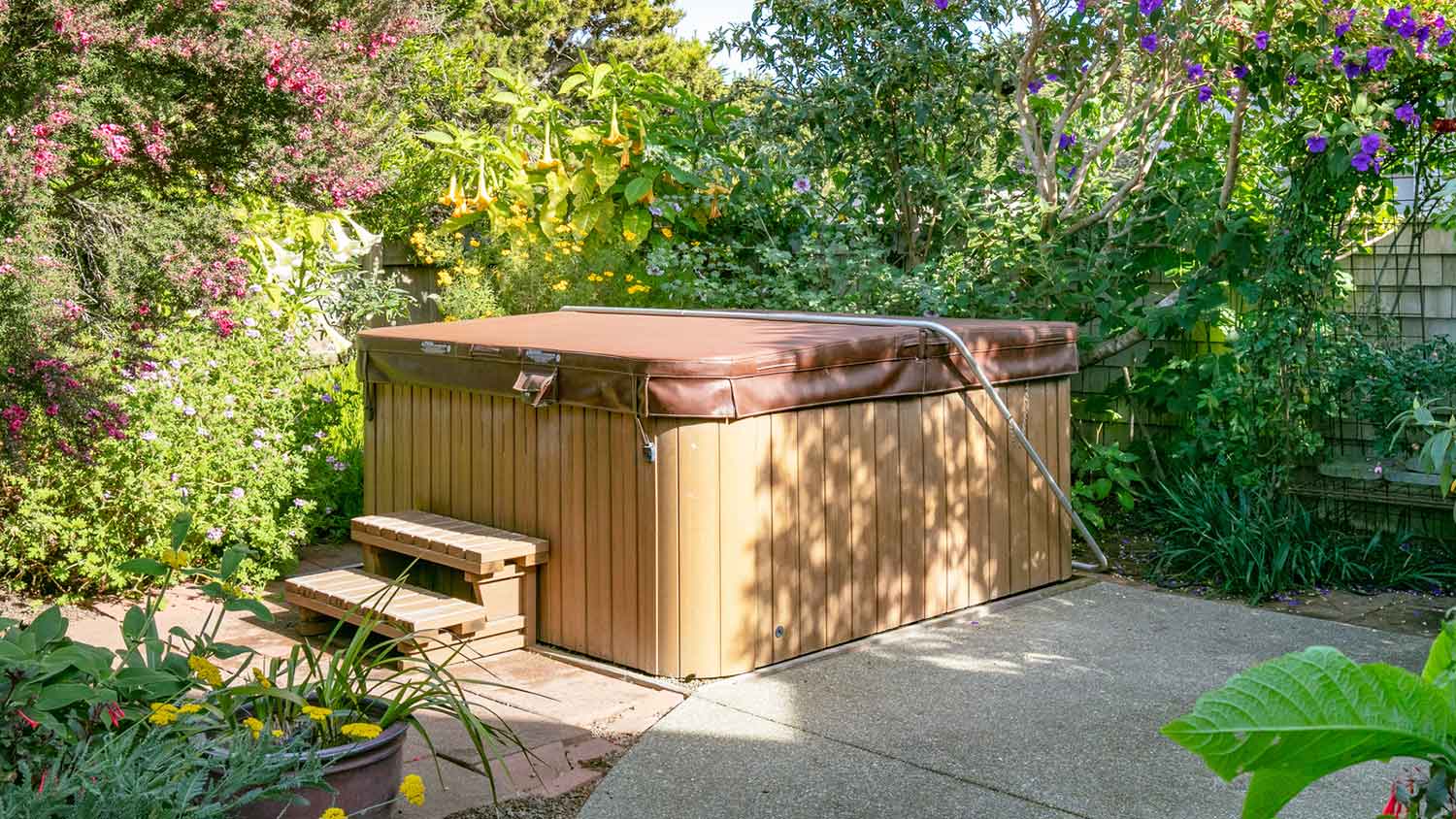
Struggling to lift the cover off of your hot tub? If you're wondering "Why is my hot tub cover so heavy," the good news is it's the cover, not you.

If your pool feels gritty, you may be wondering "why is my pool filter blowing out sand?" Here are a few reasons why and what to do about it.
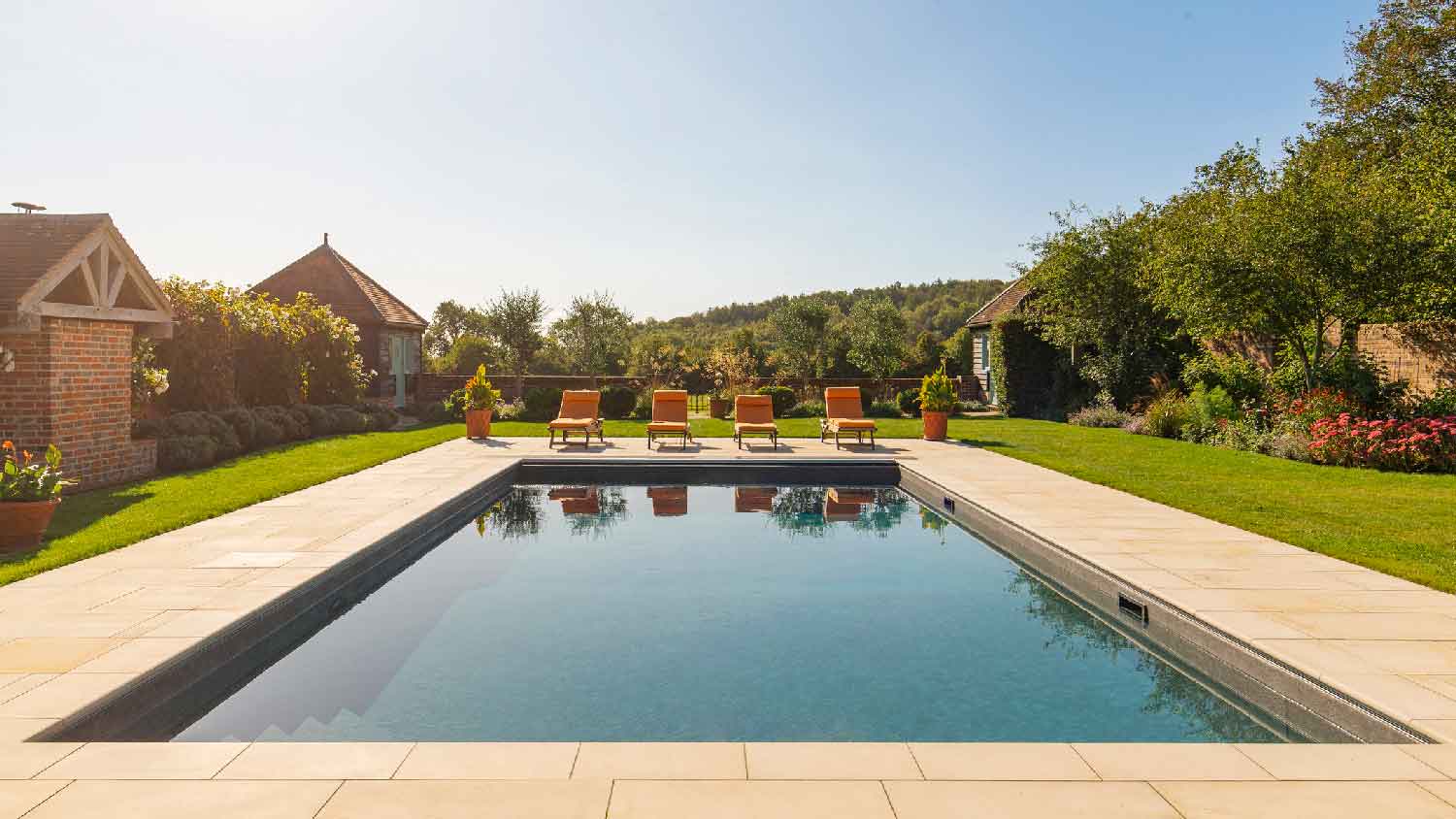
Common reasons for pool jets not working include clogs, low water levels, and air leaks. Read this to learn what’s causing your jet problem and how to fix it.